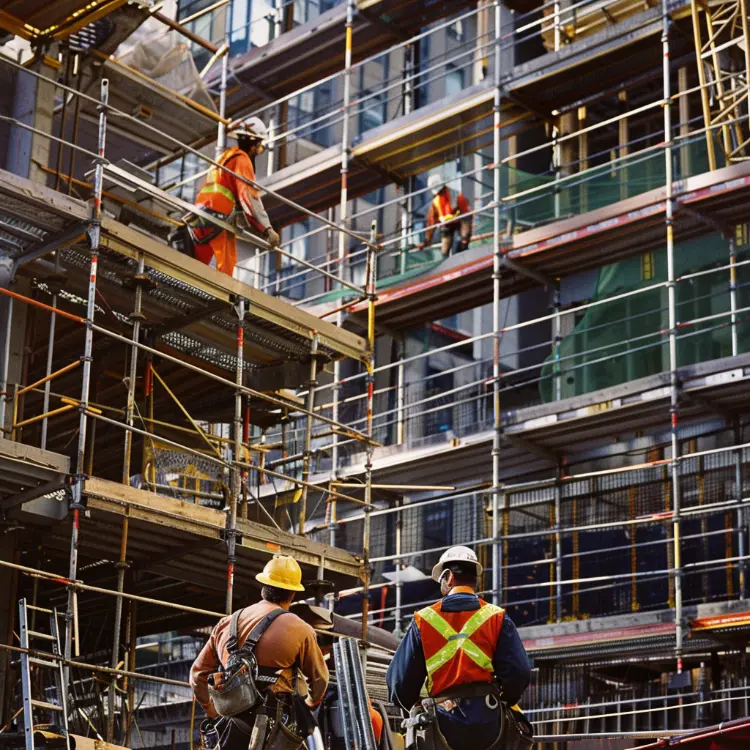Scaffolding has been a cornerstone of construction since ancient Egypt, playing a crucial role in building the iconic pyramids. Today, with our reliance on skyscrapers and multi-story buildings, the demand for scaffolding remains ever-present.

Scaffolding is an indispensable tool in modern construction, providing essential support for workers and materials. This article delves into the history, importance, and safety considerations of scaffolding, offering insights on how to choose high-quality scaffolding products. Learn about the different types of scaffolding, their applications, and the critical factors to consider for ensuring safety and efficiency on your construction site.
Scaffolding is a temporary structure used to support workers and materials during the construction, maintenance, or repair of buildings and other large structures. Typically made from metal pipes or tubes, scaffolding can also be constructed from other materials. Its modular design allows it to be adapted to various structures, including curved and sloping roofs.
Scaffolding has been used since ancient times. The Egyptians utilized rudimentary scaffolding to build the pyramids, and the practice has evolved significantly since then. Today, scaffolding is essential for constructing and maintaining modern buildings, especially skyscrapers and multi-story structures.
Scaffolding provides easy access to all parts of a structure, making it indispensable for maintenance and repair work. It offers a safe platform for workers and a place to store tools and materials. Tasks that would take a week using a ladder can often be completed in a day or two with scaffolding.
There are several types of scaffolding, each suited to different applications:
This is the most common type, consisting of one or more platforms supported by rigid, load-bearing members such as poles, legs, frames, and outriggers.
Suspended scaffolding is used when the ground is not stable enough to support a structure. It consists of a platform suspended by ropes or other non-rigid means from an overhead structure.
This type of scaffolding is mounted on wheels, allowing it to be easily moved. It is ideal for tasks that require frequent repositioning.
Aerial lifts are used for tasks that require access to high places. They are mobile and can be moved to different locations as needed.
Safety is paramount when using scaffolding. According to the Occupational Safety and Health Administration (OSHA), scaffolding accidents account for approximately 4,500 injuries and 60 fatalities annually in the United States alone (source). Here are some key safety considerations:
Ensure that scaffolding is assembled correctly according to the manufacturer's instructions. Improper assembly can lead to structural failure and accidents.
Conduct regular inspections to check for any signs of wear and tear. Replace any damaged components immediately.
Ensure that all workers are trained in the proper use of scaffolding. This includes understanding load limits, recognizing hazards, and knowing how to respond in an emergency.
Workers should always use appropriate safety gear, including helmets, harnesses, and non-slip footwear.
When selecting scaffolding products, consider the following factors:
High-quality scaffolding is typically made from durable materials such as steel or aluminum. These materials offer the strength and stability needed to support heavy loads.
Ensure that the scaffolding can support the weight of the workers, tools, and materials. Overloading scaffolding can lead to structural failure.
Choose scaffolding that meets industry standards and regulations. Look for products that are certified by reputable organizations such as OSHA or the American National Standards Institute (ANSI).
Opt for scaffolding from reputable manufacturers with positive reviews. Online services can help you find companies that have been thoroughly vetted to ensure they provide high-quality, safe, and reliable products.
Scaffolding is a vital component of modern construction, offering a safe and efficient way to access high and hard-to-reach areas. By understanding the different types of scaffolding, prioritizing safety, and choosing high-quality products, you can ensure the success and safety of your construction projects. Always check for certifications, conduct regular inspections, and provide proper training to your workers to minimize risks and enhance productivity.

Selecting the right linkage parts for your tractor
Selecting the right linkage parts for your tractors is not a hard task at all only if you are aware of what type of features and attributes to look for.
Scaffolding fittings: you should know the ways to ensure your security
Reaching the remote areas of a constructing body is really impossible without the help of anything. Especially, workers face this problem a lot. And for this purpose, scaffolding fittings are invented. Nowadays, they are being used widely.
Increased Production Leverage with Agriculture Machinery for Your Farm
Agriculture has been the backbone of many economies. Since the inception of agriculture machinery during the early ages of agrarian revolution, millions of people have earned incredible amounts of returns on their investments as a result of agriculture machinery.